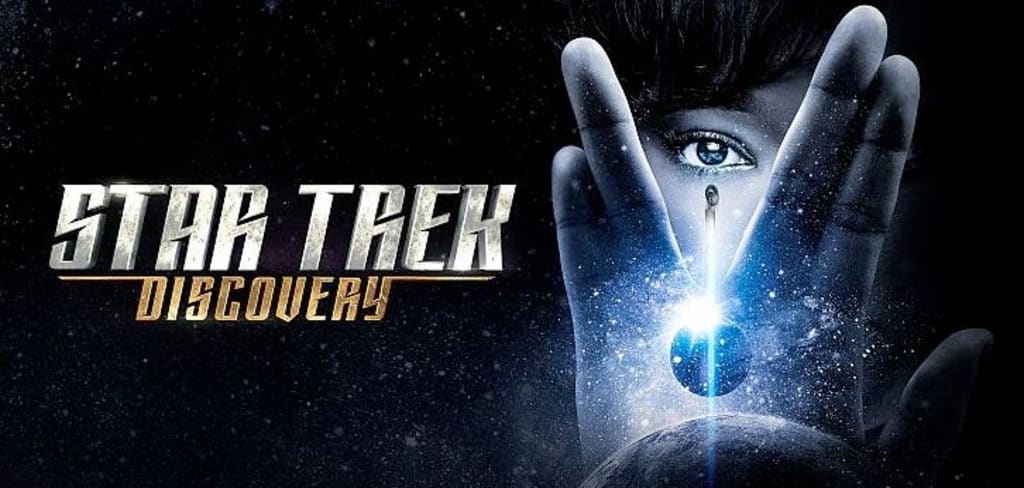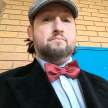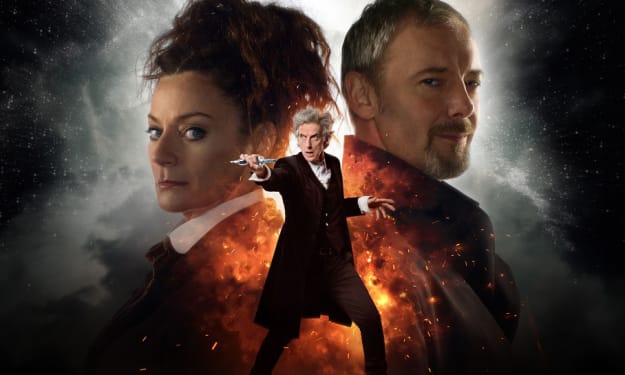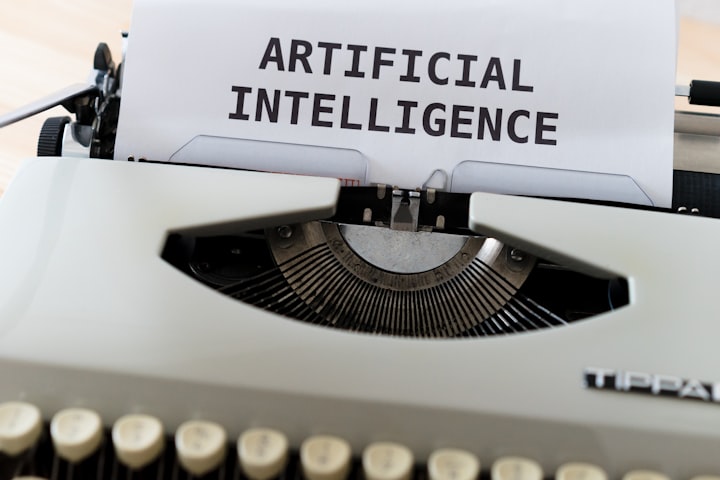
Now it’s been over a week since the gripping finale of StarTrek Discovery season 1, I think it’s safe to take the spoiler gloves off and look at this exciting first season in all its glory. Please, only read on if you’ve finished the entire first series... if nothing else, it won’t make sense if you haven’t!
When the first 2 episodes came up on Netflix here in the U.K., I was on the edge of my seat to see what this new series would do to my beloved Star Trek. After seeing what I saw as “what they have done” to the look of the Klingons in pictures and trailers, which I didn’t feel gave me anything to get excited about (mostly that they didn’t tell me what the new show was about), I was still hopeful yet very ill at ease.
I then watched the first 2 hours back to back followed by the equally new After Trekwith the endlessly charming Matt Mira. It was interesting... The Klingons still didn’t look right, the head redesigns were one thing, but the armour looked low rent. Sarak was showing emotion all over the place with lines like “behave” and metaphors like “it is your human tongue” to Burnham. Speaking of Burnham, she seemed ill at ease with what Star Trek stood for and we hadn’t seen anything of the ships for which the show was named. And what had they done to the titles? 3D Sketches as the visual, and parts of the classic theme that never turned into the theme we know and love as the music? But was it all bad? Far from it.
Although I was uncertain where Michael Burnham was coming from, Sonequa Martin-Green crushed the performance and she felt like Jack Bower in space, causing a mutiny when the rules didn’t suit her. Michelle Yeoh as Captain Georgiou was a natural mentor for Michael and seemed like a possible way for her to come back to Star Trek morals... well, till the whole her dying thing! Doug Jones seemed like he was born to have a threat ganglia and the whole crew was well played. The story felt good, but I wasn’t sure it was Star Trek. But as Matt Mira said on After Trek, this was basically a 2 hour cold open. This was set up for the show proper to come, a bold move and I was in to find out more.
As the second week and third episode rolled on, I was still very much on the fence. Captain Lorca played by Malfoy’s Dad (some may also know him as Jason Isaacs) was instantly interesting, but he seemed to be veering toward the trend to make all our heroes in reimaginings of a show dark. It seems these days that is somehow seen as better and more realistic, which I find quite sad. I liked that he was no nonsense and was realist when it came to war, but on the whole this started to feel like it would be an enjoyable watch, but not really Star Trek. Something I might just have to live with. I mean, there were things they were laying down which couldn’t possibly work with the history of the show. Why wouldn’t they use spore drives in any future vessels? Why did Spock never mention he had an adopted sister? Things just didn’t seem to add up and they didn’t feel at home in the Federation. More interesting characters who also get revealed were Tilly (Mary Wiseman), who seemed obvious to be the one to make Michael care again, and Stamets (Anthony Rapp), the grumpy engineer who obviously cares about Starfleet's mission. This seemed at odds with a lot of the other characters and the overarching feel of the way the show was going so far. In one way a ray of hope, in another way they gave this ray of hope to one of the most misanthropic characters of the new show.
I watch on as the weeks went by. The story kept me on the hook for the show in general. When friends asked I’d stick to the refrain “I like it, but it’s not Star Trek”. Stamets' character seemed to become more and more fleshed out and the introduction of his partner, Wilson Cruz as Dr. Culbert, gave some lightness to the character and made him feel more rounded as a person. Also as the Tardigrade pilot weakened and Stamets stepped into the spore drive, he seemed more likable even before the spores altered his outlook.
“Choose your pain” was a highlight of these early episodes dealing with people coping under torture and we got our first view of Harry Mudd as played by Rainn Wilson. No doubt roguish like Roger C. Carmel’s original version of the character, but darker and more twisted feeling. This furthered my feeling of “I like this, but it’s not the Trek I know.” This also marked the first use of the word “fuck” in Star Trek and it felt out of place. I had no problems with the adult themes and swearing in this show, but this felt like after 5 episodes if you haven’t used the word, you probably don’t need to at this point. It stuck out a bit for me to say the least. But as just an hour of TV in general it was undoubtedly spell-binding and Shazam Latif was a welcome addition to the cast as Ash Tyler.
But here we reach a turning point for me when a couple of episodes later, we get to the over titled “Magic to Make the Sanest of Man Go Mad.” Harry Mudd returns in the darker version of we saw before, seeking revenge on Lorca for leaving him aboard the Klingon ship to die. This is a classic time loop episode where the same few hours repeat which calls to mind the Next Generation episode “Cause and Effect.” Stamets is the only one who can see what is happening but with the spores messing with his mind, will anyone believe him before Mudd gets his fill of killing Lorca many times over and moves on? This felt like Star Trek for the first time. Not quite perfectly Star Trek, but this was more of a mix of classic Trek style and modern story telling that I was looking for in this show.
Over the next few episodes, the Federation starts to look like it’s going to turn the tide of the war with the Klingons and Stamets, under health concerns, takes one last but much larger spore jump, consisting of many small jumps before hanging up the spore drive for good. Lorca seems to be listening a little more and seems genuinely concerned for Stamets although still very driven by war. It felt to me at this point that things were turning a corner. We’d seen some pay-offs to earlier un-Treklike behaviour and it felt mostly Star Trek-like. But then it happened. After the Discovery found itself not where it should be. The promise we had been teased with in online rumours came true. We were in the mirror universe.
Now shit gets real (as we are allowed to say in new Trek!) In the mirror world, we saw characters come to terms with things they had done and what they would do to survive this place. Was it worth making it back home if they lost themselves along the way? Burnham started questioning everything and insisting that they make it home the right way. Stamets, stuck in the mycelial network, has to work with his mirror counterpart in a cool trippy world whilst he is thought to be dead in our world and his partner is dead. Killed by Ash who turns out to be the Klingon Torchbearer. It’s like classic Star Trek has been fused with the long form storytelling of the binge-watching Netflix age with plot twists a plenty like Breaking Bad did so well. Every time, you think you know what Disco is going to be, it becomes something different and something better. For me it became Star Trek. Yes, producers and writers you can look smug... you’ve earned it!
Then they hit us with the biggest “oh no they didn’t” since they blew up Vulcan in Star Trek (2009)... no, I don’t mean mirror Sarak with a goaty (genius as that was), I mean Lorca being from the parallel word. In After Trek when they showed all the clues they had snuck in, yes a few came to mind straight after the reveal but some were so subtle to be perfect to discover after the fact. It makes sense he wouldn’t be acting very Starfleet-like, you know, given he isn’t actually a Starfleet officer. The way they reveal it with the light sensitivity felt a little iffy, because they never mentioned the mirror counterparts having this issue in any other shows' mirror episodes, but given everything else happening at this time, it didn’t bother me too much at all. It was more something I thought a bit more about later.
Michelle Yeoh is as dark and devious in her role as the emperor as she was warm and strong as the captain. Tilly, playing her Terran double Killy, really gets to stretch her acting legs and play so many facets so well. Everyone is on top form. I love seeing Saru adapt to being in charge and use skills that may have seemed like weakness as strengths in leadership.
All that is left to bring this series in for a landing is a return to our universe for Burnham where she faces a moral quandary with the lessons she has learned since her early mutiny onboard the Shenzhou. She is of course redeemed and actually shows Starfleet how it’s done when they are at risk of selling out their morals to win at all costs.
So much done in a mere 15 episodes.
In conclusion, Discovery takes you on a journey. It purposefully and often wrong-foots you to deliver a great story and make it all the more satisfying when you get the pay-off of those classic Star Trek moments. Some of these moments have been left in the air to be resolved next season. We see the appearance of the Enterprise at the end of first season and, in After Trek, the producers promised this will make sense of why Spock never mentions his adopted sister, but not till we see series 2. And I believe it. Is this series perfect? Not quite. Even if they do show a change in Sarak and the Vulcans their level of emotion doesn’t fit with the race we saw in TOS or any other series (although DS9 onwards the showrunners became worse at keeping Vulcans strictly emotionless). Yes, I know Vulcans have emotions, they just suppress them, but the point is they are meant to be really good at suppressing them. Spock was prepared to let his Dad die because of the rules in an episode of TOS. The new Sarak, played well as he is by James Frain, doesn’t have that cold Vulcan detachment. In the recent movies Zackary Quinto has played that line so well between who Spock must be as a Vulcan with his half human side and education from the humans around him. I’d like to see more of that in series 2. The Klingons have gone in interesting directions. As warring houses it’s good that you don’t have to play the traditional Klingons as you can suggest they will regain that feeling only when they unite. Klingons speaking Klingon instead of English at all times makes them feel more distant and alien than Klingons have come to feel through familiarity. As for the redesign of the Klingons, I would have like to have seen something that was more true to how we saw them in the original films onwards, but I came to get used to the new look. The uniforms however still don’t do it for me. It feels like design over practical fighting armour as we saw them wear in TNG and the like.
I’m sure some of the things I had a problem with thus far will turn out to be an inspired set-up by the writers to be justified later. Others will be things I’ll have to like or lump. No series, I would remind my fellow Trekkies, is going to be 100% how you would have it. But this certainly is Star Trek, but Star Trek for the modern age and that I can most definitely live long and prosper with.







Comments
There are no comments for this story
Be the first to respond and start the conversation.